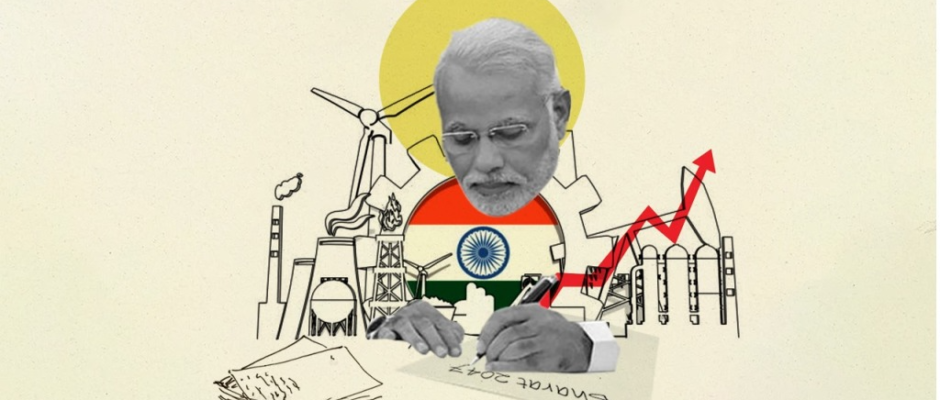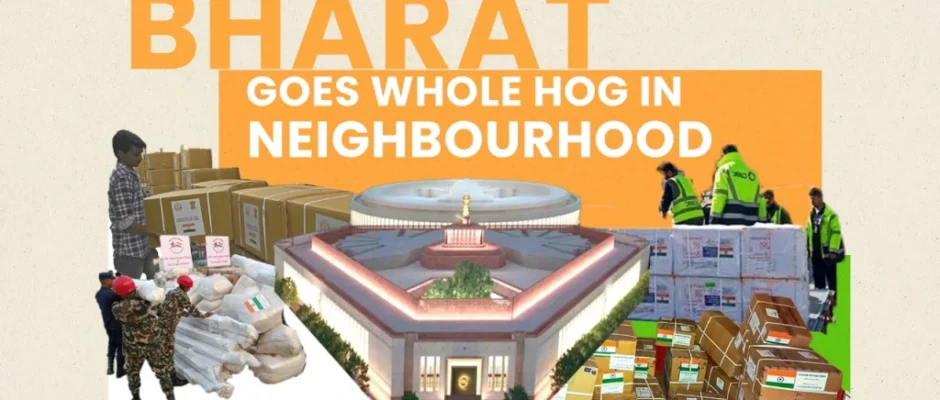Testing Times in Canada
Trudeau regime will have to address core issue of terrorism to keep its relations with Bharat intact or face consequences. Pummy Pandita Eyebrows were raised when Canadian Parliament paid homage to Hardeep Singh Nijjar, a hardcore Pakistan-backed Khalistan terrorist and named in several anti-Bharat campaigns globally. One minute’s silence by Canadian Parliament members to Nijjar, a wanted criminal in Bharat, does not augur well either for bilateral relations or global campaign against terrorism of all shades and hues. Prime Minister Justin Trudeau seems to be playing with ‘Khalistani fire’ to stay in office and even sacrifice the strong and sound footed relations with India at the altar of preserving his political fiefdom with support from the extremist group. It’s not just one minute’s silence that matters! Trudeau hailing Nijjar ‘for his persistent efforts in advancing the diversity and inclusion ideals that Canada cherishes’ is something that’s gross and unpalatable. By buying peace with Khalistanis that campaign for a separate sovereign state which most Sikhs do not support, Trudeau exposed his political opportunism. He seems to have conveniently banked on anti-Bharat forces to portray himself as someone who genuinely cares about his country. In the process, Trudeau has succeeded in appeasing his political crutch group in Khalistanis and diverted attention from Canada’s burning issues. In fact, Indian-descent Member of Parliament Chandan Arya exposed the extremist role of Canadian Khalistani elements when Air India flight 182 was bombed midday 39-years back on June 23. Incidentally, this very day is remembered in Canada as National Day of Remembrance for victims of terrorism. In the mid-air bombing of Kanishka aircraft carrier 329 innocent lives including crew members was lost to terrorists that made Canada their home. Rightly so, Arya pointed to the ideology responsible for Kanishka attack that’s alive and kicking with a small chunk of Canadians. Recent celebration of Indian Prime Minister Smt Indira Gandhi is yet another incident where terrorism is glorified, violence mainstreamed, hate and violence eulogized. It also indicates that dark forces responsible for these terror events are getting regrouped and portends terrible events to come. Khalistan movement’s past is rife with murder and bloodshed. Tens of thousands of Hindus and Sikhs have been slaughtered by terrorists not just in India but in US, Australia, the UK, and Germany among others. People in Canada seem to have forgotten that tend to forget that 39 years ago when terrorists [Talwinder Singh Parmar (Canadian citizen), Inderjit Singh Reyat (held both British & Canadian citizenship), Ajaib Singh Bagri (US citizen), Ripudaman Singh Malik, Surjan Singh Gill, Hardial Singh Johal, Daljit Sandhu and Lakhbir Singh Rode (all Canadian citizens) bombed Air India flight. Regretfully, there are still locations in Canada where people who pray to these very terrorists as ‘demi-gods’. Gurpatwant Singh Pannun of Sikhs for Justice open threat to Hindu Canadians life is nothing but “glorification of terrorism” and acceptance of hate crimes under the pretext of “freedom of expression”. Canada has fallen under Trudeau’s gross mismanagement making it an extreme version of Pakistan. Canadian economy that was in shambles has not yet fully recovered. Meagre income that ordinary Canadians are able to earn is negated by inflation overhang that continues to roil the economy. Cost of living in Canada has about tripled in three years. Steep spike in housing rents left many individuals without a place to live. Over 40,000 people died in eight years due to drug overdose and the country is fast emerging as narco-terrorism hub. As Pakistan is falling Islamic terrorism, Canada has gone the Khalistani way.[1] Since his minority government depends on the backing of New Democratic Party led by Khalistani Jagmeet Singh, Justin Trudeau has gone his way. Trudeau, much like his alliance partner Jagmeet finds nothing wrong with pro-Khalistan operations being carried out on Canadian soil. Justin Trudeau’s open support to a terrorist such as Nijjar has given legitimacy to violence committed by the Khalistani groups in Canada. In addition to endangering security of Hindus residing in Canada, Trudeau has snatched rights of common Canadian citizens to profit from shifting geopolitical conditions. Trudeau, who claims Indian involvement in Nijjar’s murder, remained silent on Karima Baloch, an activist who fled persecution by Pakistani government and settled in Canada. Trudeau twiddled his thumb when opposition leader Michael Chong charged that he was being targeted by a Chinese diplomat. Canada’s evolution as a safe sanctuary for Pakistan-backed Khalistani terrorism is the result of Trudeau’s silence on legitimate interests of Canadian residents that he breaks only when one terrorist is killed as part of his vote-bank politics. Canada as a nation will now pay the price for appeasement of Khalistanis by its Prime Minister who is responsible from harbouring organised crime, help terrorists and criminals. Trudeau has isolated Canada from Western world. What a catastrophe! Indian is upset with Canadian theatrics. “India stands at the forefront of countering menace of terrorism and works closely with all nations to tackle this global threat. 23 June 2024 marks 39th Anniversary of cowardly terrorist bombing of Air India flight 182 (Kanishka) in which 329 innocent victims including 86 children lost their lives in one of the most heinous terror-related air disasters in history of civil aviation,” it said in a statement.[2] Canada’s unflinching support to anti-India forces may disturb the delicate applecart. Bracing up to fight terrorists of Khalistani or Islamist shades is in global interest. (Author is head of operations at Centre for Integrated and Holistic Studies, a non-partisan think tank based in New Delhi) References: [1] https://www.news18.com/opinion/opinion-canada-has-become-new-pakistan-thanks-to-trudeaus-soft-spot-for-khalistan-8585898.html [2] https://economictimes.indiatimes.com/news/india/india-marks-kanishka-flight-anniversary-as-canadian-parliament-honors-khalistan-terrorist-hardeep-singh-nijjar/articleshow/111110391.cms?from=mdr


